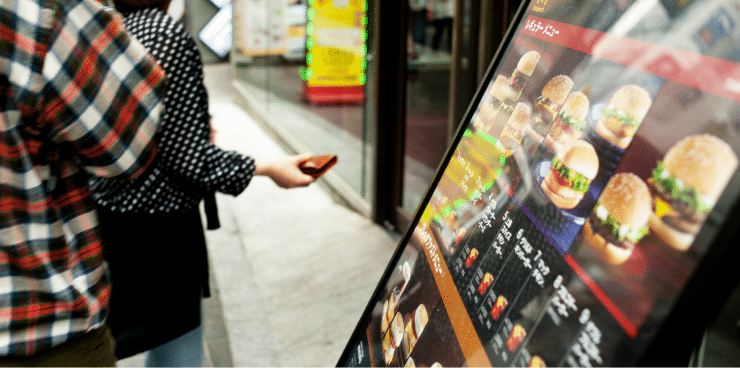
Remember the last time you went to a fast-food joint or bought a new phone? I’d bet every last dollar of mine that you didn’t leave with just a hamburger or a new mobile device — you probably got fries and a drink or a case and a wireless charger.
And these examples, my friends, are the perfect examples of bundle pricing.
When consumers see multiple products offered together at a lower price than they’d pay if they bought each item separately, it’s only natural for their eyes to light up and their wallets to open.
It’s how many successful businesses increase their close ratio, average sale, profit (C.A.P.). It’s how they provide value to their customers while also protecting their bottom line.
Bundle pricing can be an extremely effective marketing strategy, but it’s not without its challenges. When unsuccessful, bundle pricing can actually lead to decreased sales, frustrated customers, and a damaged reputation.
To make sure your price bundling is a big hit, first, you’ve got to wisen up on the concept and find out what it is, how it works, and when you should — or shouldn’t — use it.
What Exactly is Bundle Pricing?
Bundle pricing is a type of pricing that involves putting together two or more products and selling them at a lower price than if they were sold individually.
Bundle pricing can be applied to any type of service or product. However, it is most effective when there are more items included in the bundle than would naturally be expected to purchase.
For example, Costco never sells just one bottle of ketchup. While the first bottle covers the cost of doing business, the second bottle is incremental profit. By doing this, Costco instantly enjoys a higher average sale and profit. They also see an increase in conversions as consumers believe that, even though the 2 pack price is more expensive, that they are receiving a better deal and are more willing to enjoy the perceived lower price.

Characteristics of Bundle Pricing
To determine if bundle pricing could be a potential friend, or enemy, to your business, you’ll want to know the key characteristics of bundle sales relating to your business. Here are some of the pros and cons to think about:
Pros:
- Makes it harder for customers to make direct comparisons on your price. You are offering them a bag of oranges to your competitor’s apple.
- Entices customers to buy more items, which increase your average sales.
- Creates a genuine value for customers, which lead to higher customer satisfaction rates.
Cons:
- Is more difficult to set up and manage, especially if you have a lot of products or services.
- Finding the right mix of products or services to bundle together can be tough to get right.
- Can lead to lower margins if you’re not careful about how your product bundle pricing — too low, your customers will question the value. Too high, and you’re not providing a good deal.
These are important considerations when deciding if bundle pricing is right for your business. Ultimately, it’s about finding that sweet spot for your products, services, and customers.
2 Types of Bundle Pricing
There are two types of bundle pricing that businesses can use to sell their products, and they are known as pure bundling and mixed pricing.
 Pure bundling is when a business offers product/service bundling that must be purchased together. An example of this would be if a company offered a discount on a car when you also bought the tires from them.
Pure bundling is when a business offers product/service bundling that must be purchased together. An example of this would be if a company offered a discount on a car when you also bought the tires from them.
The main advantage of pure bundling is that it allows businesses to keep tight control over the pricing of their products and services. By offering the components only as a bundle, businesses can ensure that customers pay a certain price for the entire package. This can help businesses to avoid having to constantly adjust prices for individual components.
This method can also make it easier for businesses to manage inventory levels. When components are offered only as part of a bundle, businesses don’t have to worry about stocking separate inventory items for each component. This can simplify inventory management and help businesses to avoid stockouts.
A potential downside of pure bundling is that it might limit customer choice. Customers who only want one or two of the components in a bundle might be forced to buy the entire package, even if they don’t need or want all of the included items. This can lead to customer frustration and decreased satisfaction. Therefore, businesses might lose out on potential revenue if customers are turned away by the lack of flexibility in the pricing.
Mixed Pricing
Mixed pricing is a type of pricing strategy that combines two or more pricing models. This can be done to offer discounts to certain customers, generate revenue from multiple sources, or provide different levels of product or service.
There are many different ways to mix pricing, but some common combinations include subscription and pay-per-use models, or bundling products or services together at a discount.
This method can be quite advantageous as it allows businesses to be more flexible with their pricing, and cater to a wider range of customer needs. It can also help businesses increase their revenue and profits by generating income from multiple sources.
However, mixed pricing can also be quite complex, and it can be difficult to manage different price points for different products or services. It is important to carefully consider all the factors involved before implementing a mixed pricing strategy. Otherwise, it could end up being more trouble than it’s worth.
When done correctly, mixed pricing can be a helpful tool for businesses to increase sales and grow their customer base. But it’s important to understand all the risks and rewards involved before deciding to switch to this type of pricing strategy.
 There’s a reason why Costco has a cult following. The wholesale company is the best product bundle pricing example in the retail space by far.
There’s a reason why Costco has a cult following. The wholesale company is the best product bundle pricing example in the retail space by far.
Why? Because their membership club provides incredible value to shoppers, who are willing to pay an annual fee for the privilege of shopping at the store. And in return, Costco can keep prices low by bundling products together and selling them in bulk.
You don’t get one bottle of Ketchup, you get three.
You don’t get a pint of mayonnaise, you get a gallon.
None of the competition can compare, making Costco more profitable than Wal-Mart (per square foot). Therefore, they are the master of the bundle.
However, there are a few products that Costco doesn’t bundle together in some way, from food items to electronics. This allows them to sell items at a lower price point than their competitors, which attracts even more customers.
What’s also impressive about Costco’s bundling strategy is that they often team up with other businesses to provide even more value to their customers.
For instance, they have partnered with travel companies to offer vacation packages at a discounted rate. This is just another way that Costco can provide even more value to their customers than other retailers.
It’s no wonder that Costco is one of the most successful retailers in the world. When you can bundle up like they do and offer such great value, it’s hard to lose. You’ll boost the profits from your average sale and keep your customers coming back for more.
After all, have you ever left Costco spending less than $200?
Final Thoughts
If you want to give your business a boost, consider using bundle pricing. It’s an excellent marketing tool that can quickly take your business from surviving to thriving.
Bundles let your customers spend more but at a higher value, so they feel like they’re getting a good deal — because they are.
So, how can you start bundling your products and services to look and feel distinct?
“Yeah, but… we’ll cost more money!”
Yes, yes you will, but you’ll also have far more value.
You can always lower your price, but it’s way more difficult to ask for more later. And I guarantee you, someone, somewhere will beat your price. Even if it’s out of fear or desperation.
It takes courage and confidence to bundle. But done right, you will increase your conversions, average sale, and profit (C.A.P.).
At Wizard of Sales®, we can help you figure out the best way to bundle your products so that you look and feel distinct in the market, and have your customers clamoring for more.
If you’d like to know more about how to bundle your products the right way so that you can sell bundles instead of boxes, book a demo with us today. We would be more than happy to help!
- Futuristic Game for the Ad Masters - July 11, 2024
- Classical Conditioning: Pavlov’s Dog in Advertising - June 20, 2024
- Hear, See, Speak No Advertising - June 9, 2024
